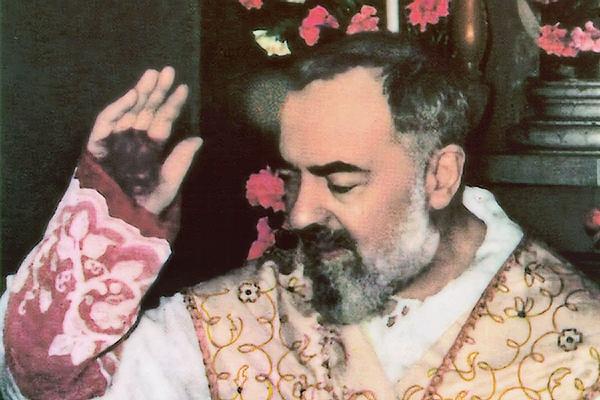
One of the most intriguing and controversial miracles is the gift of the stigmata or crucifixion wounds of Christ on the hands, feet, side, and, in some cases, the head.
“The stigmata manifests itself through some miraculous non-life-threatening, bleeding wounds that should not be able to continue,” said Father Joseph de Orbegozo, rector of the Cathedral of St. Andrew in Little Rock and an instructor at the Diocese of Little Rock’s House of Formation. “There are different ways in which miracles manifest and how Christ appears to different people. There seems to be a pattern of those who have received it who pray before the cross of Christ.”
The Catholic Encyclopedia at newadvent.org offers several examples of the faithful receiving the stigmata, which comes from pity for Christ in his passion and shared participation in his sufferings.
St. Francis of Assisi was the first person to receive the stigmata. While praying in front of a crucifix during the feast of the Exaltation of the Cross in 1224, St. Francis had a vision of a crucified seraph, a six-winged angel. After the vision, he developed visible wounds in his hands, feet and side and lived with them until he died in 1226. Francis is often depicted in art with nail holes in his hands.
St. Catherine of Siena (1347-1380) received the stigmata on the fourth Sunday of Lent in 1375 while praying before the cross. At first, her marks were visible. However, she prayed the wounds would be invisible to others, yet she would still bear their pain until her death. She was canonized in 1461 and declared a doctor of the Church in 1970. She is often depicted in art with a crown of thorns.
St. Pio of Pietrelcina (1887-1968), also known as Padre Pio, received signs of the stigmata on Sept. 20, 1918, while he was praying before a crucifix after Mass, according to the National Centre for Padre Pio. The Franciscan monk’s wounds were visible and bled for the remainder of his life. His story spread around the world, creating interest and controversy. In the 1920s, the Vatican forbade him from saying Mass in public to counter his popularity. Doctors found the wounds of Padre Pio to be supernatural. He was canonized in 2002.
Skeptics have doubted the veracity of many who claim to have received the stigmata, and some who claimed to have been given the stigmata confessed to inflicting their own injuries, according to a 1999 article, “The Mystery of the Five Wounds,” by Smithsonian Magazine.
“There's so much controversy around them because there's always the question of if the person is doing it to themselves, maybe causing self-harm for publicity,” Father de Orbegozo said.
Please read our Comments Policy before posting.
Article comments powered by Disqus Catholics reminded that there’s still work to be done
Catholics reminded that there’s still work to be done
 Social, spiritual benefits of eating dinner as a family
Social, spiritual benefits of eating dinner as a family
 All Souls Mass focuses on grief, loss of loved ones
All Souls Mass focuses on grief, loss of loved ones
 Arkansas Catholic 2023 pilgrimage sees Spain, Portugal
Arkansas Catholic 2023 pilgrimage sees Spain, Portugal
 Mass and holy hour mark start of Respect Life Month
Mass and holy hour mark start of Respect Life Month
 St. Paul says: How does the Bible define love?
St. Paul says: How does the Bible define love?
 6 steps to getting married in Diocese of Little Rock
6 steps to getting married in Diocese of Little Rock
 Most frequently asked questions on Catholic marriage
Most frequently asked questions on Catholic marriage
 St. Timothy winner recommends adoration to other teens
St. Timothy winner recommends adoration to other teens
 St. Joseph a model of solidarity with immigrants
St. Joseph a model of solidarity with immigrants
 Two gifts after Jesus’ death: Virgin Mary and Eucharist
Two gifts after Jesus’ death: Virgin Mary and Eucharist
 Why we have an altar, and not just a communion table
Why we have an altar, and not just a communion table
 Pope: Wars should be resolved through nonviolence
Pope: Wars should be resolved through nonviolence
 Living relationship with Jesus Christ in the Eucharist
Living relationship with Jesus Christ in the Eucharist